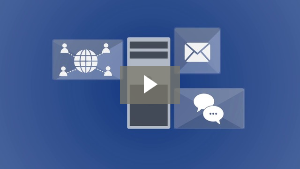Spam can leave a bad taste in people’s mouths, and in this particular case we’re not talking about the lunch meat. At one point or another, we’ve all been sent an unsolicited message of no importance whatsoever. Whether it’s from a retail store you visited two years ago or from a business you have no recollection of, receiving thousands of junk emails, or spam, can be a huge nuisance, especially if they’re malicious in nature.
According to a threat security report by Symantec, spam comprised 50 percent of all emails received last year. But even though the volume of spam has been reduced over the past decade, plenty of unsolicited emails still find their way into employee inboxes. And when they pile up, it can pose a serious problem for your company in more ways than one.
Time-consuming
It’s no mystery that employees can waste a lot of time checking off every item in their inboxes, but how much worse does it get if spam messages add to the mix?
For one, spam retains the potential to use considerable amounts of bandwidth. In any given day, organizations are flooded with hundreds of incoming spam messages, which take up space and slow down the network. This means that loading vital cloud applications and websites can take several minutes, halting crucial operations.
Several studies have also discovered that the average email user spends around 16 seconds per spam message. And although a few seconds here and there may not seem like much, the time spent reading and deleting these disruptive messages gradually adds up to hours or even days. If left unchecked, thousands of spam messages received on the daily can cost your business $712 dollars per employee each year.
Various cyber threats
Unfortunately, aside from being a 16-second nuisance, spam is the perfect tool for distributing phishing scams and malware attacks. Many people like to think they’re too clever to be caught by get-rich-quick schemes or misspelled viagra ads, but these days, you should count yourself lucky if you can identify spam messages from a mile away.
Spam and the social engineering attacks they carry are more convincing than ever. A large number of spam messages masquerade as legitimate enterprises, IT support staff, financial institutions, legal authorities, or personal friends and family. These scams usually alert potential victims about a problem, urging them to surrender personal information, social security numbers, credit card details, and login credentials.
In other cases, spam messages trick their targets into downloading malware-ridden attachments that wreak havoc once they’ve successfully infiltrated an organization’s network. A worrying trend we’re seeing is most computer viruses are now designed to hijack computers and convert them into spam-sending bots, which would then spread the infection to other workstations.
So what do you do in the face of such a threat? At the very least, educate your staff about the dangers of spam and insist they exercise caution before interacting with any link or email attachment. But most importantly, contact a reliable IT support provider to equip your network with reliable antivirus, email filtering, and antispam services that will ensure the safety of your business.
The weakest cyber security link is often where you don’t look, and email security is a prime candidate. If you need email spam filtering and antivirus protection, the team at IntelligISTM can equip you with the solution your business needs. Contact us at www.intelligis.com to learn more.


